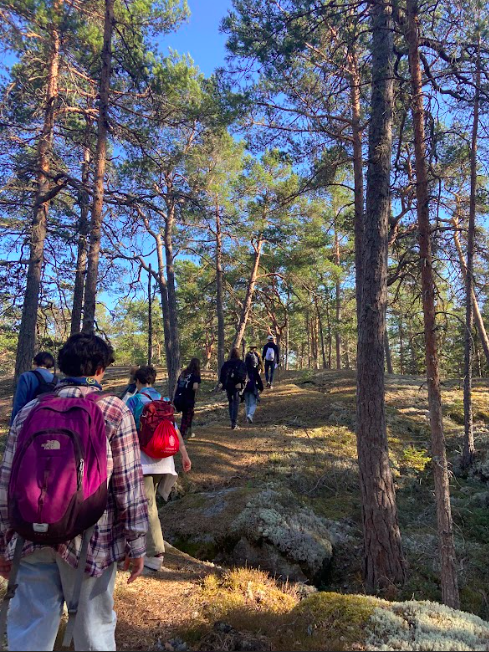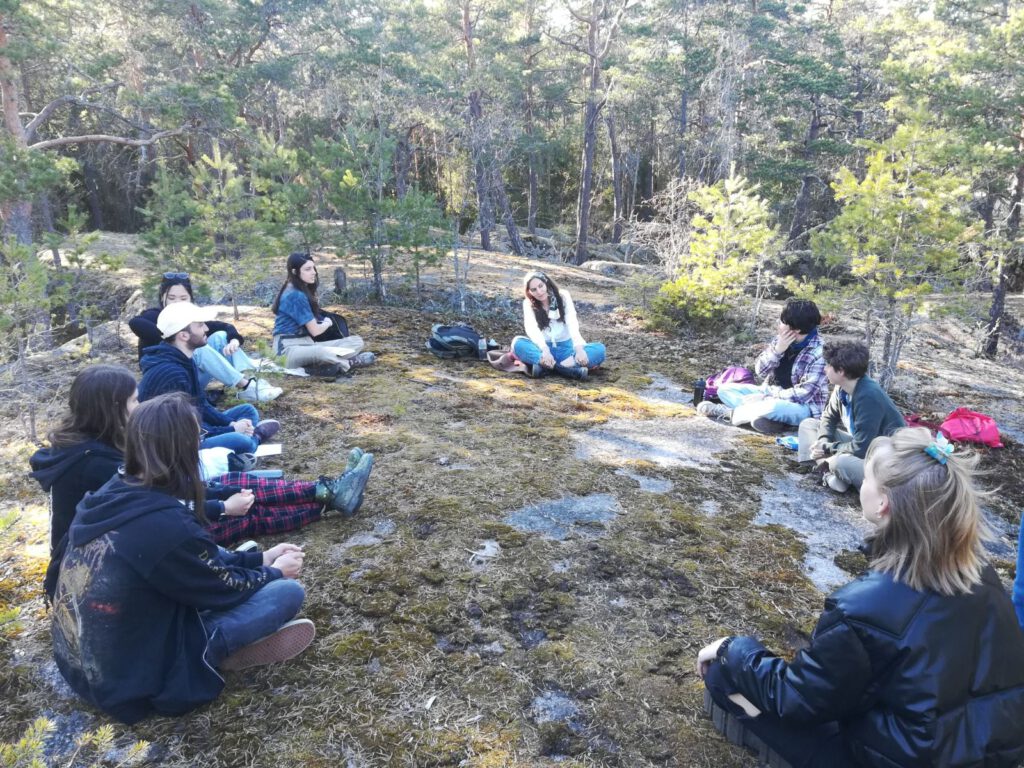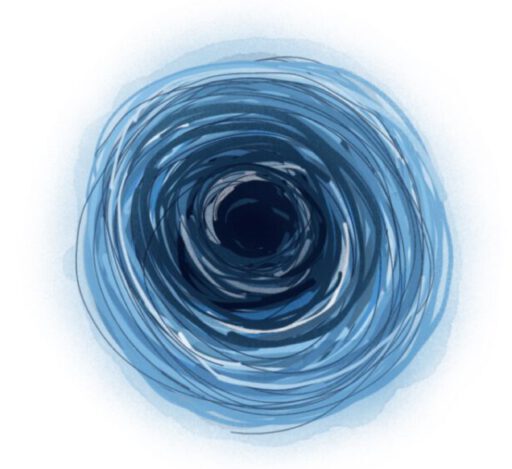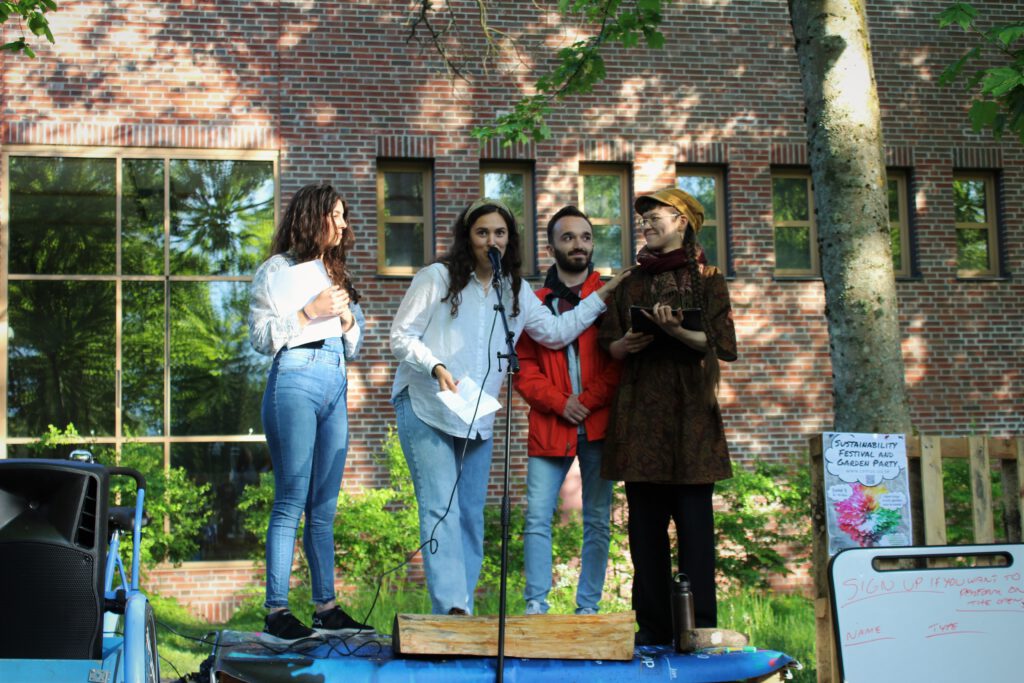
Sweden
In 2021 I began my journey to Sweden, in a camper, to start my masters in Uppsala. I did not know what to expect of the upcoming two years ahead of me, and as COVID was retreating slowly in the Swedish society (or at least the formal rules) I entered a world of academic highs, new friends, beautiful sunsets, darkness, coziness, snow (and lots of it), coldness, adventures, Midsommar and above all a renewed love for the non-human world around me.
In my masters I learned about how to speak of ‘nature’, how it intersects with everything around us, in us. From how musea display the human-nature connection to research about the Oostvaardersplassen to the Anthropocene to how we position ourselves in regards to animals, to the historical ecology of things, to vibrant matter, mycelium, the forest, seaweed, design, the industrial revolution… to everything. This study became something all encompassing for me, a way to see the world. And suddenly, I saw connections everywhere where I did not see them before. Why think about what you do when walking in a forest? Most of the time you just do. And why think about your emotional connection to all of this?
Especially the course ‘Sustainable art and narratives’ resonated with me. This course was focused on how art and stories shape our worlds and how these can affect our emotions towards sustainability and how we connect with the non-human world around us. Seeing ‘nature’ from the perspective of plants and animals and using different media to help us understand our own emotions.
There were speakers who told us stories about their connection or different forms of sustainable art, in which the book by Robin Wall Kimmerer (‘Braiding Sweetgrass’) was a red thread throughout our weeks in this course. She uses specific language, stories and memories to describe things with emotion whilst still being a professor, which I had been missing deeply in the academic world so far. Relating to this we were given the assignment to write a paper about the role of language in how we view ‘nature’ which is attached to this page. This course has been a huge inspiration for my thesis topic, in which I realized how important this emotional connection is and how little it is being taken into account when making policy or sustainability plans for the future.
Immersive experience
Another project during this same course has shaped my personal experience and the way I see the role of art and narratives in our connection to the world around us. As the final project, my wonderful group and I wanted to connect people more to a specific place by creating more consciousness through awareness of your surroundings, stories and creating art together. Therefore, we decided to create an immersive experience.
As a group we went to a forest just outside of Uppsala, prior to the project, and walked until we found a place that resonated with all four of us; a giant boulder. There was not a clear explanation for picking this place especially, other than that we all felt like it was the right spot. And maybe the perfect circle of young pine saplings that stood right atop the boulder, functioning as a ‘story circle’ added to the atmosphere.
Back home, we started writing stories from the perspectives of that specific place in the forest we had observed, highlighting our aim to avoid a human-centered narrative. Represented were the boulder itself, the moss, the tree and a bird. All written to connect these characters through space and time by incorporating their past memories. Furthermore, we had thought of doing a movement whilst listening to the stories for the participants. In this way not only their mind could immersive themselves into what we were telling them, but the body could feel the place as well. A fun fact is that when we read the part about the bird feeling the wind, an actual wind started blowing in between our fingers. You can read the stories we have written below.
Furthermore, we had created the project in such a way that we would start with a meditative walk in which participants would be forced to slow down (no phones allowed) and really pay attention to everything going on in the forest in silence. After we had taken place upon the boulder, and sat in our ‘story circle’, we started telling our story from the different perspectives. They had as goal to emotionally connect the participants to the place we were sitting, and really spark their imagination. The last step included a poetry circle, in which we invited the participants to write one sentence for each of the themes we had prepared, without knowing what the previous person had written. This resulted in numerous of beautiful poems about the place, and in active thinking about your feeling towards the different characters and feelings we had just described in the stories.
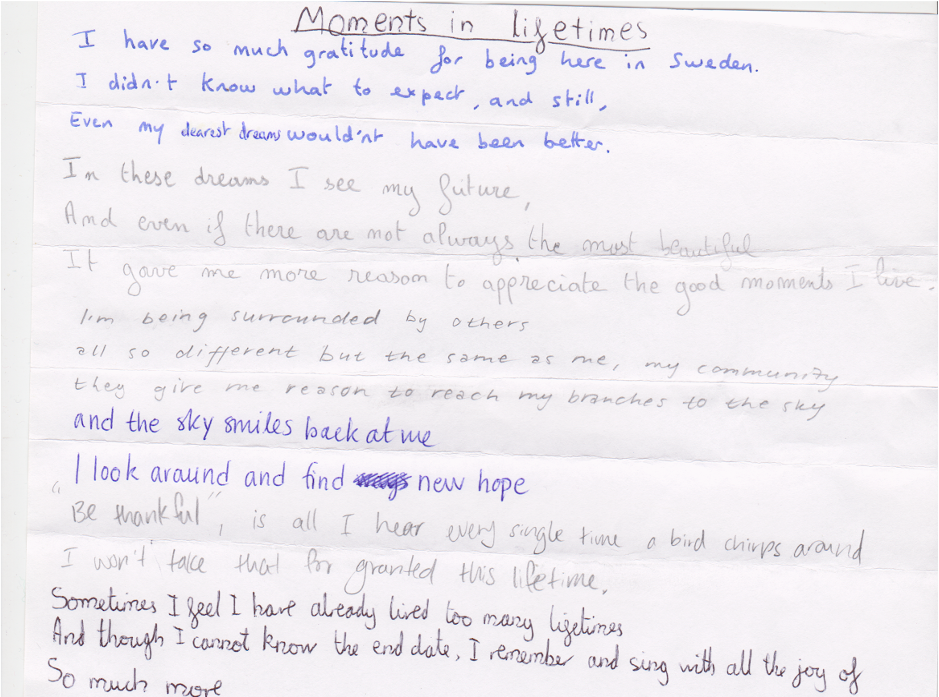
After the event, the general feedback was that the participants thought it was a beautiful experience that had brought them closer to the non-human world around them. Some were even so affected that they got emotional. We performed the stories again on a small sustainability festival hosted by the university (see photo on top of the page). The reaction was similar, even without the walk and the collective poetry round.
This project proved for me that storytelling can evoke strong connections and emotions, and thus can shift people’s perspectives on how they view the non-human world around them. It has been a highly inspirational project to me, and I often think back to it when walking through the forest. I would love to possibly organize something similar for my thesis about water in Zeeland.
